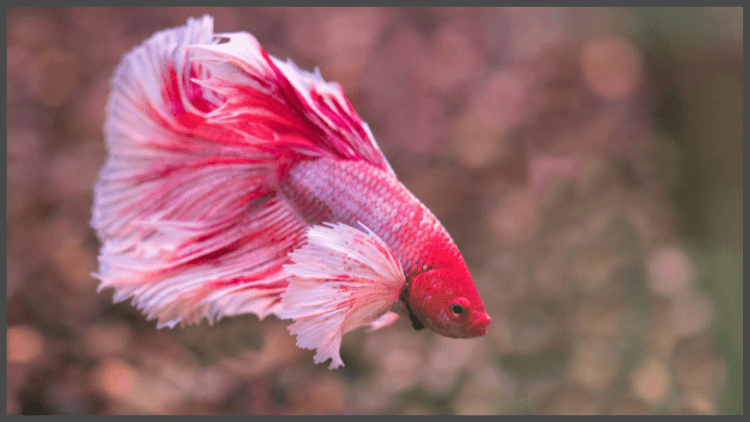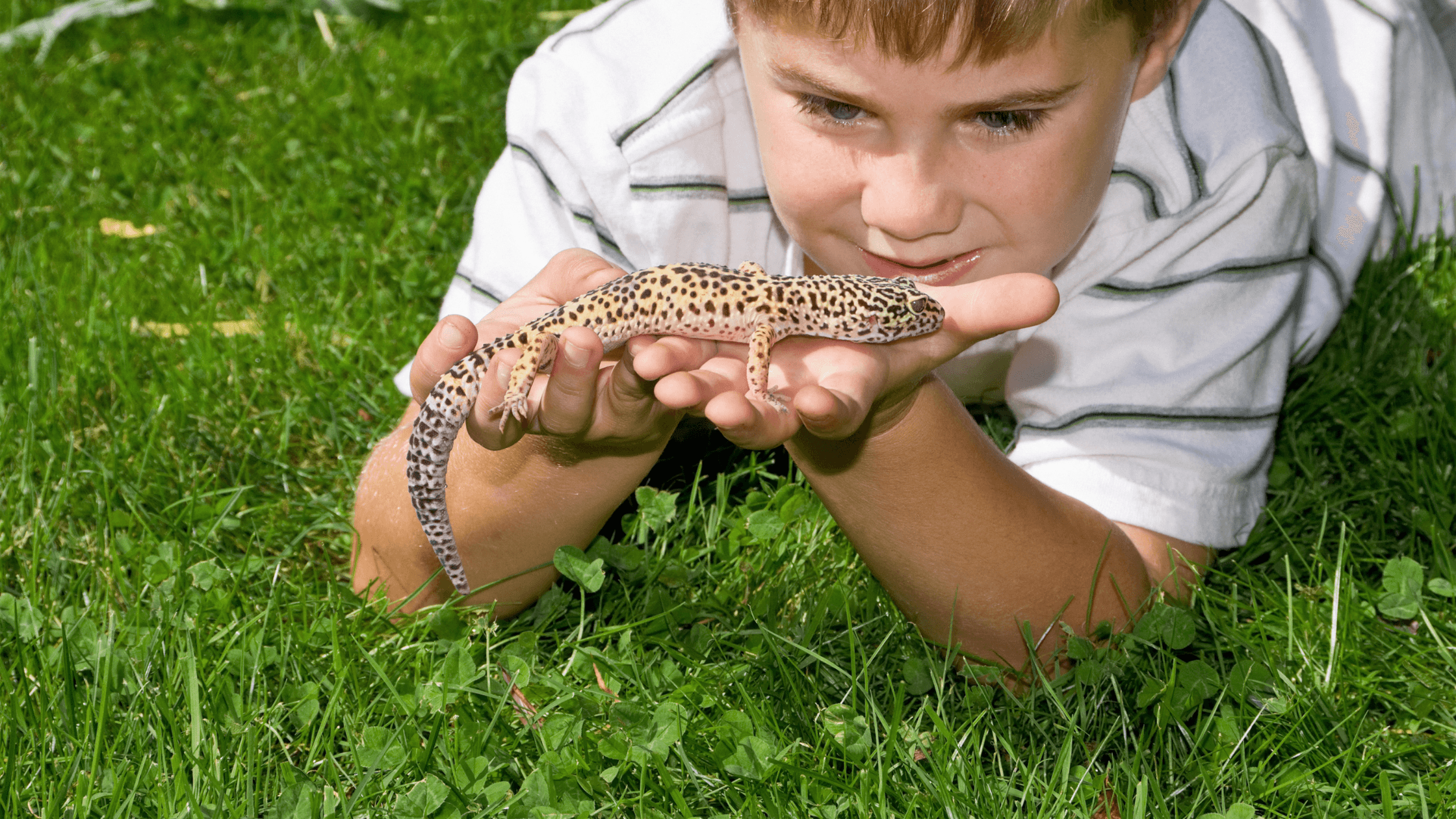It's National Pet Month, and kids love their pets. It’s a joy for parents to watch them become more responsible while caring for their beloved animals. But what about kids with allergies who can’t have traditional pets? Are there options available so that they can get the same experience as their non-allergic peers?
Luckily, there are lots of options for unconventional pets -- everything from lizards to certain types of rodents to digital pets. In addition, there are other allergy-friendly pets, such as certain breeds of dogs and cats, or pets that children can help care for and spend time with without living in your home with them.
In the end, only you can make the best choice for your family. But let’s look at some of the options available, as well as some pros and cons of each to help get you started.
1. Fish

Many families start off their children’s experience with pet stewardship with fish. Fish don’t require a lot of maintenance, and they are a great option as allergy-friendly pets.
You don’t have to invest in a massive, expensive tank with rare fish. Let’s look at some of the favorites for families right now that are also relatively inexpensive and low maintenance:
• Goldfish: Did you know that goldfish come to recognize their owners? That’s one awesome perk of this freshwater fish, which doesn’t need a large tank to thrive.
• Betta fish: These pets can also recognize their owners and can live for several years.
• Guppies: Guppies come in a variety of colors, which kids love. You can pick out a few to swim around in your tank.
Whatever kind you decide on, be sure to have at least five gallons of water per fish in your tank, and do some research about the best food to feed them. Their tanks need to be cleaned regularly, which can become a chore. Also, don’t mix species of fish unless you’re absolutely sure that they won’t prey on one another. That’s not something that would be fun to explain to your kiddos!
The downside of fish as pets is that other than making eye contact or swimming close to the surface when they see you, fish don’t really interact and you certainly can’t hold them. If that’s something that you’re looking for, though, keep reading. There are lots of other allergy-friendly pets!
2. Birds
Birds make sweet and adorable pets, especially parakeets and canaries. They can also live up to ten years with proper care, including regularly cleaning their cages and taking them out to fly.
Birds are very social and may interact well with you and your kids, depending on their individual temperament. They will live longer in pairs or groups since they are happier in community. That said, they may not interact as well with humans if you have many of them.
The biggest drawback of keeping birds as pets is also one of the perks: their songs. Birds are active and like to sing in the morning, sometimes very early. Luckily, you can throw a sheet or blanket over their cage and they’ll most likely stay quiet.
3. Reptiles
There are several types of reptiles that people keep as unconventional pets. Reptiles do not produce any dander whatsoever, so it is unlikely that anyone would have allergy-related issues.
There are many types of lizards that people love to have as pets. One of my favorites is the bearded dragon. This is because they are very social animals, including with their owners. They will interact with you and your children, and they live up to ten years.
The crested gecko also makes a good reptile pet, since it is quite docile and very unlikely to bite.
Finally, there are also snakes. Though they may not be everyone’s cup of tea, some people love them and maybe that includes your child. Different types of king snakes and pythons are favorites as pets. They are not poisonous, and as long as they’re regularly handled, they can be rather friendly.
The biggest drawback to choosing reptiles as allergy-friendly pets are their maintenance. For one thing, most need to eat other live animals (insects or, in the case of snakes, rodents), which can be somewhat unpleasant to behold. For another, many need their environments to be kept within certain temperature ranges and other conditions that require attention on your part.
4. Rodents
As with fish, there are several types of rodents to choose from, all of which make good allergy-friendly pets. Since most are mammals, though, they aren’t technically hypoallergenic. Instead, they’re just so small that their dander isn’t released in sufficient quantities to cause problems for most people.
Let’s look at a few different types:
• Hamsters: These are some of the largest rodents you might consider, and they can be rather social with their owners.
• Gerbils: Gerbils are great for kids because they bond well with humans and are really adorable.
• Mice and rats: The idea of having mice and rats in your home might be icky at first, but both are highly intelligent animals that can even be trained with positive reinforcement.
• Ferrets: Ferrets bond very well with humans and interact as well. They make great pets for kids because they are so active and play with them, but they must be taught not to nip or bite.
Rodents usually don’t live more than three years or so, so they might be a good starter pet. One thing to keep in mind is that they are nocturnal, so you’ll need to keep their cage somewhere out of earshot overnight.
5. Dogs and Cats
A word of caution: you have to be very careful about getting a so-called hypoallergenic dog or cat, as no animals within these species can really be completely free of irritating allergens. According to Dr. James T.C. Li with the Mayo Clinic, there is no such thing as a truly allergy-free dog. There are just some that tend to irritate allergies less than others.
In the end, it depends on your child’s particular allergies more than anything. We recommend speaking with an allergy specialist or pediatrician before investing in one of the following animals.
Dogs:
• Portuguese water dog
• Soft-coated Wheaton terrier
• Bichon frisé
• Schnauzer
• Poodle
Cats:
• Sphynx
• Siamese
• Oriental shorthair
• Burmese
• Cornish or Devon Rex
• Bengal
With all of these, be sure to choose a smaller animal; the smaller they are, the less they shed, and therefore the less dander they release.
Other Allergy-Friendly Pet Options
Outdoor Pets

Another outside-of-the-box option for families of kids with allergies is to get a pet that will not live inside your home with you. One example would be a horse, albeit an expensive and time-consuming one. Horse owners typically board their beloved at a barn and visit several times a week to groom them, clean the stall, and ride them. If your child is a passionate equestrian, this might be an unconventional pet to consider.
Cats can also be outdoor animals, or at least spend a large portion of their time outdoors. Although there is risk involved in letting a cat roam free, the less time they spend indoors, the less they will bother allergies.
Adopt an Endangered Animal
Another unique, allergy-friendly pet that certainly would not live with you would be an adopted wild animal. Many animal non-profits offer this option, including the World Wildlife Fund, which also sends an adorable and cuddly stuffed animal to you with your adoption. Some companies even allow you to track your adoptee.
Digital Pets
Finally, another unconventional pet option for kids with allergies is a digital pet. While this is certainly not the same as having a real-life pet to care for, your child can still get the experience of taking care of something and watching it grow. This might be a good option as a trial run for any family considering a real pet.
Protect Your Child’s Health
If your child has allergies, there are a few things that you can do to minimize their chances of experiencing a reaction, particularly if you chose anything other than a reptile or fish.
Don’t let your pets sleep in your kids’ bedrooms or even go in there, if possible. Choose non-carpeted flooring and/or vacuum regularly. Discourage your child from putting their face on the animal and don’t let the pet lick them.
Always Be Prepared
Whether you decide on one of the unconventional pets above or another allergy-friendly pet, just be sure to do your research ahead of time. Find out what your new family member will need in terms of environment, food, water, time, attention, toys, and more before you bring them home.
In addition, check to see what you may need to take care of from a legal standpoint. Some local governments require all pets to be registered, especially dogs. Some don’t allow exotic animals, including types of snakes and lizards (this is often because they could become invasive if released). Finally, if you rent your home, your landlord might have rules against some or all types of animals in the residence.
A family pet is a great way to teach your kiddos responsibility. They will also model their behavior toward animals on yours. Therefore, it is even more important that this experience be a pleasant and safe one for everyone involved.
